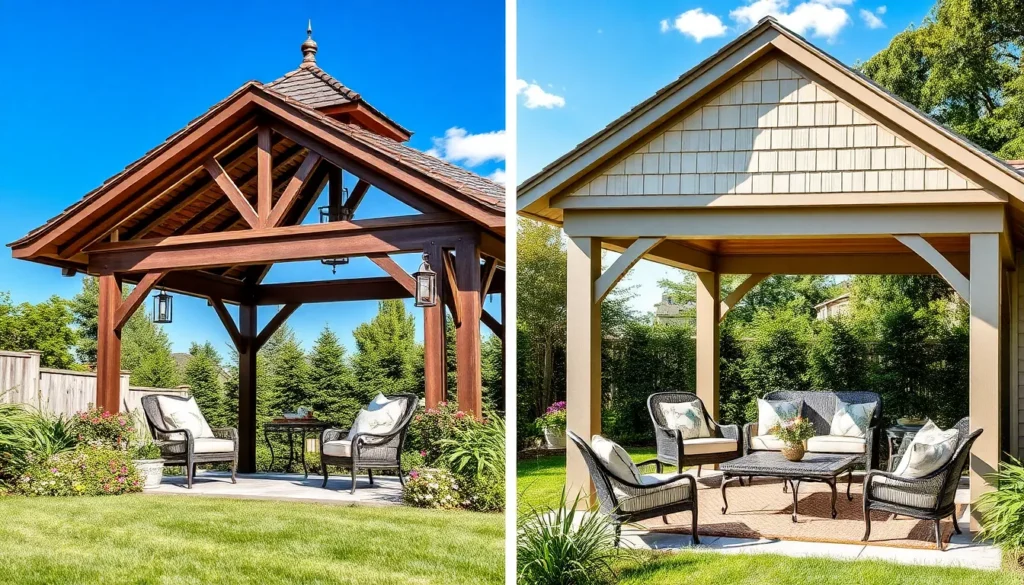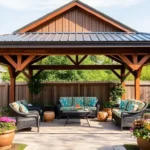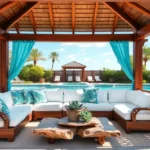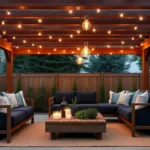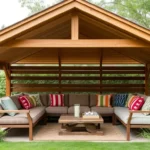Transforming your backyard into a haven of relaxation and style starts with the right gazebo, and the roof is its crowning glory. Whether you’re a novice just dipping your toes into outdoor design or a seasoned homeowner refining your space, selecting the perfect roof style for your gazebo is crucial. It not only defines the aesthetic appeal but also dictates the functionality, providing shelter from the elements while enhancing the ambiance of your outdoor retreat.
In this article, you’ll discover the nuances of various roof styles, from the classic charm of a pitched roof to the modern allure of a flat design. We’ll guide you through key considerations like climate compatibility, material choices, and maintenance demands, ensuring your gazebo roof complements your lifestyle and environment. Dive in with us as we make this essential aspect of outdoor living not just understandable, but also an exciting step in creating your personal oasis.
Assess Your Gazebo’s Purpose
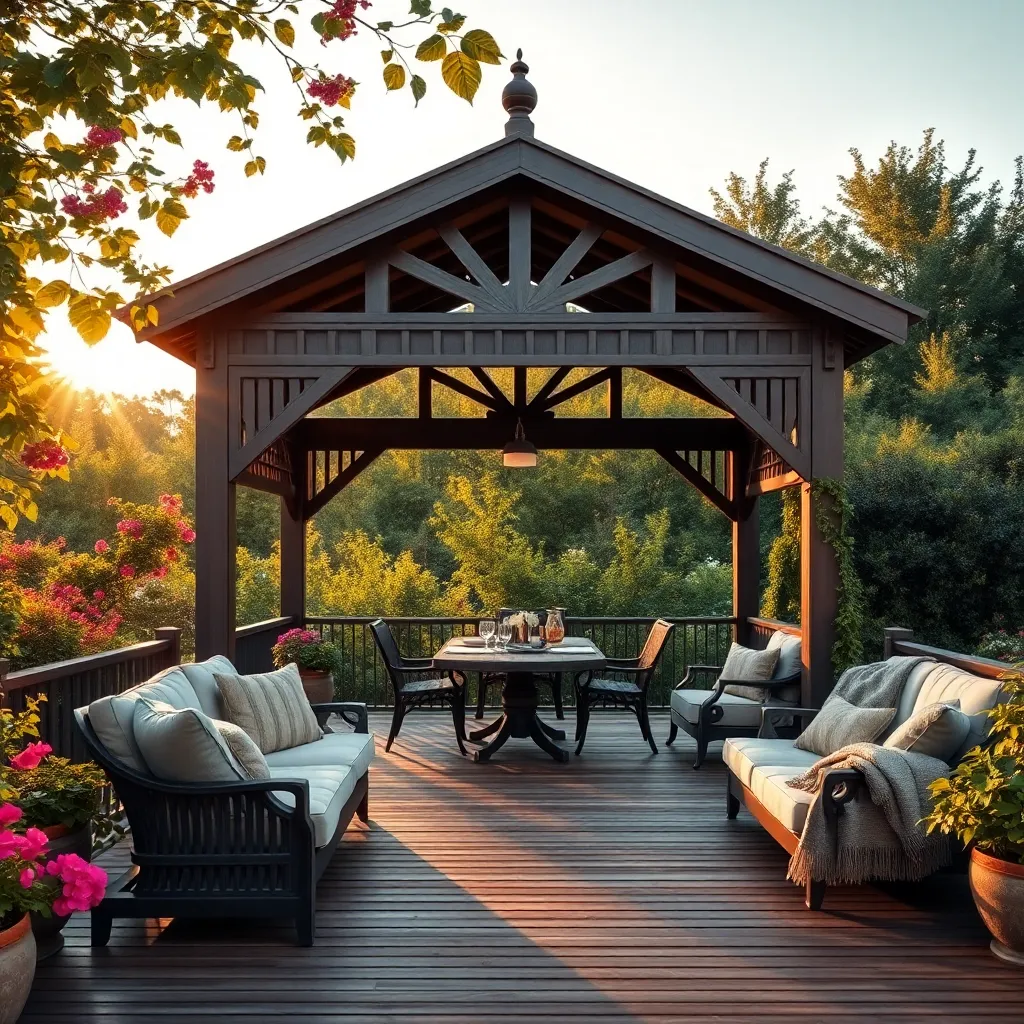
First, consider what you primarily want your gazebo to achieve as this will influence the roof style you choose. Do you plan to use it mainly for entertaining guests, or is it intended as a quiet retreat for relaxation? For social gatherings, a more open design like a hip roof with wide eaves can provide ample shade and air circulation, making it ideal for warm climates. On the other hand, if you envision your gazebo as a cozy nook, a steeply pitched gable roof can create a more intimate atmosphere and effectively channel rainwater away, ensuring longevity.
Next, think about the materials that will best suit your purpose and environment. For a robust, all-weather structure, consider using durable materials like metal or cedar for the roofing, as they offer excellent resistance to the elements. Additionally, incorporating design features such as skylights can enhance natural lighting and provide an airy feel without compromising protection. For those with advanced DIY skills, integrating solar panels into the roof can be a sustainable way to power evening lighting or small appliances, adding value and functionality to your gazebo.
Evaluate Local Climate Conditions
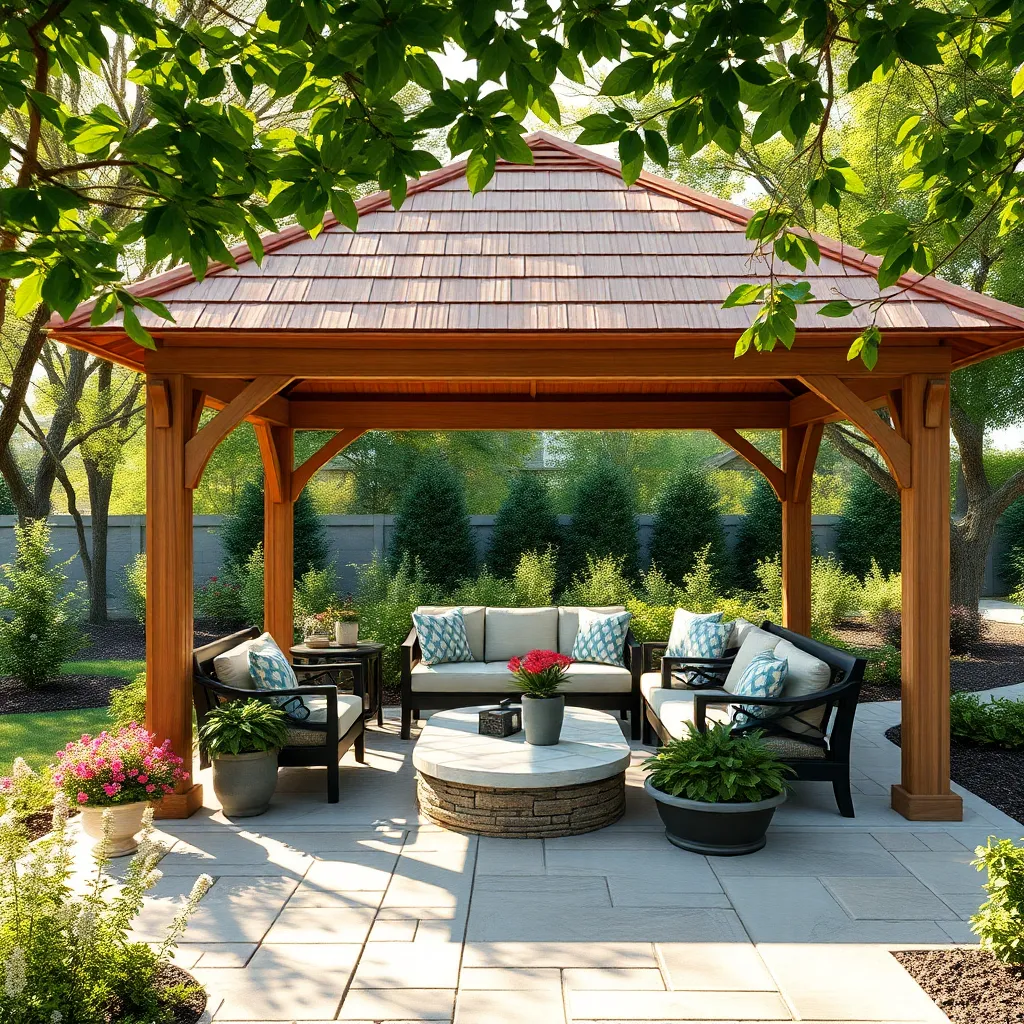
Understanding your local climate is crucial when selecting the right roof style for your gazebo. In regions with heavy rainfall or snow, a pitched roof is ideal as it allows for efficient runoff, preventing water accumulation and structural damage. For areas with high winds, consider a hip or hexagonal roof style, which offers greater stability and wind resistance. Materials like treated wood or powder-coated metal can withstand harsh weather conditions, ensuring longevity and reducing maintenance needs.
For those living in sunnier climates, a flat or gently sloped roof can provide ample shade while maintaining an open, airy feel. Consider using UV-resistant materials such as polycarbonate panels or high-quality fabrics for protection against harsh sunlight. Incorporating ventilation elements, like roof vents or lattice designs, can help manage heat buildup, making your gazebo more comfortable. Remember, the right roof style not only enhances the aesthetic appeal but also adapts to the specific demands of your environment, ensuring your outdoor space is both beautiful and functional year-round.
Research Roof Style Options

When researching roof style options for your gazebo, consider the aesthetic and functional aspects that best suit your outdoor space. Common styles include gabled, hip, and flat roofs, each offering unique benefits. A gabled roof, with its classic triangular shape, provides excellent water runoff and is ideal for regions with heavy rain or snow. If you prefer a more modern look, a flat roof can be a practical choice but requires proper drainage systems to prevent water pooling. Ensure that the style you choose complements your garden’s design and meets your climate needs.
For materials, opt for durable choices that match your budget and maintenance preferences. Cedar and redwood are popular for their natural resistance to decay, while metal roofs offer longevity and low maintenance. For those interested in advanced techniques, consider adding a skylight to a gabled roof for additional natural light, or using polycarbonate panels on a flat roof for a contemporary touch. Always check local building regulations to ensure compliance with any height or material restrictions, and remember that investing in quality materials now can save on repairs in the future.
Consider Aesthetic Preferences
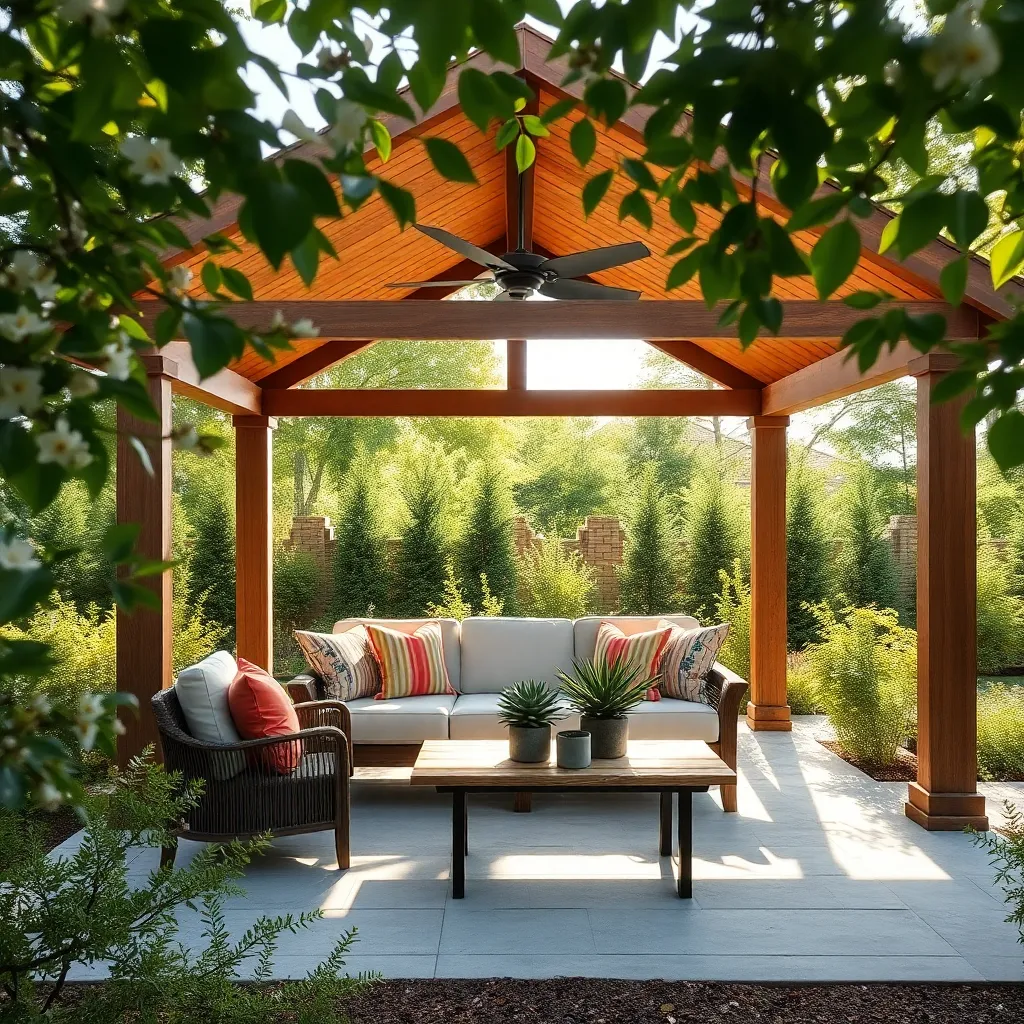
When choosing a roof style for your gazebo, consider how it complements the overall aesthetic of your outdoor space. Opt for materials that resonate with your garden’s theme—such as natural wood for a rustic look or sleek metal for a modern vibe. Color coordination is key; matching the gazebo roof with existing elements, like your house or patio, can create a harmonious visual flow. For beginners, starting with a simple color palette that matches existing structures can be a safe choice.
For those looking to elevate their design, consider incorporating decorative elements like intricate trim or lattice work. Advanced gardeners might explore custom designs using mixed materials—such as combining wood and glass for a contemporary touch. Pay attention to the shape of the roof, as well; a pitched roof can add height and drama, while a flat roof offers a sleek, minimalist finish. Remember, the goal is to create a cohesive and welcoming space that reflects your personal style.
Calculate Budget and Costs
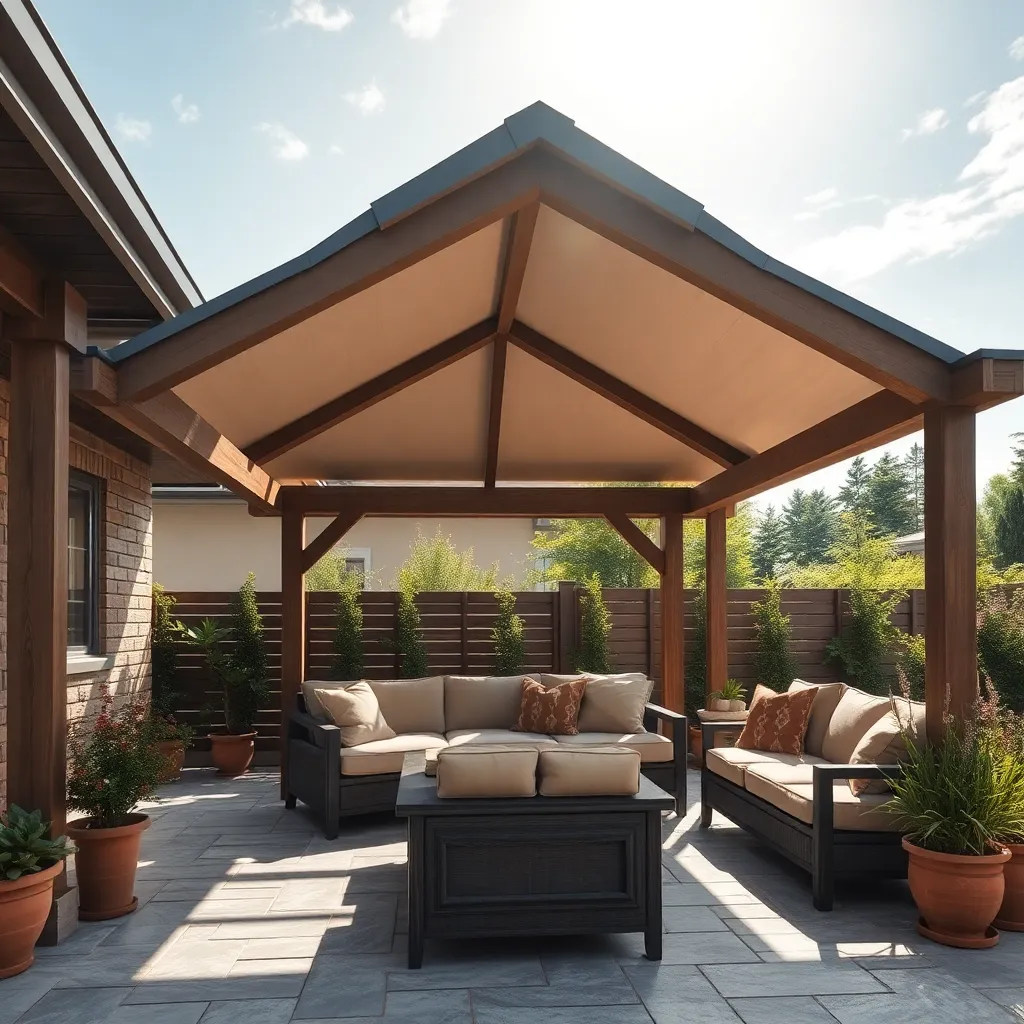
When calculating your budget for a gazebo roof, start by considering the materials you’ll use, as these will significantly impact your costs. Common materials include wood, metal, and vinyl, each offering different price points and maintenance needs. For example, a wooden roof might provide a classic look but can be more expensive and require regular upkeep. On the other hand, a metal roof might cost less initially and offer superior durability, making it a cost-effective choice in the long run.
Next, factor in the design complexity and size of your gazebo, as these elements will also affect your budget. A simple, flat roof might be more affordable, while a more complex design like a cupola or a domed roof could increase costs due to additional materials and labor. To keep costs manageable, consider starting with a basic design and expanding later if needed. Additionally, don’t overlook hidden expenses such as delivery fees or professional installation if you’re not planning a DIY project. By carefully planning and prioritizing, you can create a stunning outdoor shelter that fits both your aesthetic preferences and financial constraints.
Conclusion: Creating Beautiful Outdoor Spaces
In choosing the right roof style for your gazebo, we’ve explored five key relationship concepts: understanding your partner’s needs, balancing aesthetics with functionality, considering climate compatibility, evaluating maintenance demands, and budgeting collaboratively. Each of these steps mirrors the essence of nurturing a healthy relationship, where communication, compromise, and shared vision play pivotal roles.
As an actionable next step, take a moment to discuss with your partner which gazebo styles resonate with both of you. This simple exercise can strengthen your decision-making skills and deepen your connection.
Remember, just as a well-chosen roof style enhances the beauty and utility of a gazebo, informed relationship choices enrich your life together. Bookmark this article now, ensuring you have a handy guide to revisit when you need to refresh your relationship wisdom.
Looking ahead, embracing these concepts not only promises a stunning outdoor space but also paves the way for enduring relationship success. Your journey to a harmonious partnership begins with thoughtful choices—let this be your guide.

